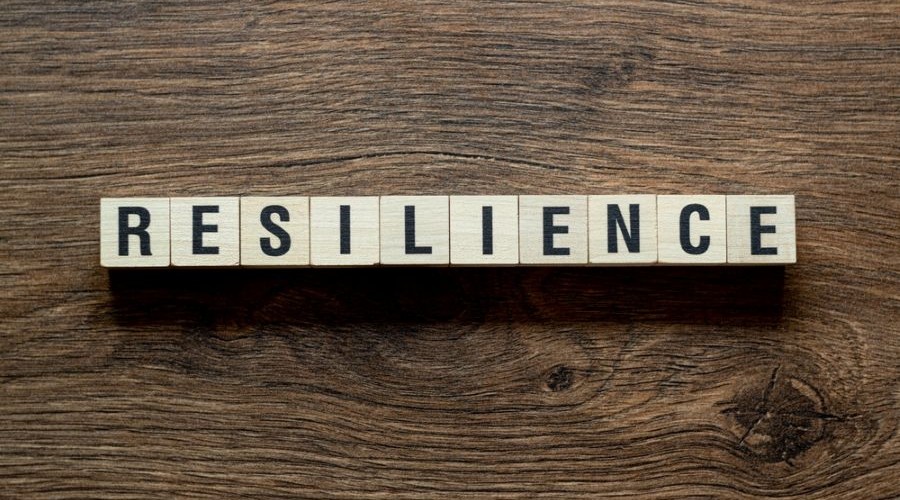Resilient Leadership: Five Habits Nonprofit Executives Can’t Ignore

Strong nonprofit leaders know how to rise during times of crisis. They rally their teams, act decisively, communicate clearly, and push forward with purpose. But when challenges persist and uncertainty becomes the new normal, the real test begins. Once the adrenaline fades, what sustains leaders isn’t urgency—it’s resilience.
In today’s environment of constant change, clarity alone isn’t enough. True resilience—the ability to adapt with intention, stay grounded, and guide teams forward without losing sight of the mission—is what allows organizations to thrive through disruption.
The Challenge of Practicing Resilience
Most leaders understand that resilience is essential, but few manage to weave it into their daily routines. The pace of work often takes over, reflection gets postponed, and reacting becomes second nature. Over time, that cycle becomes habit.
Today’s nonprofit executives are navigating not just isolated challenges, but overlapping disruptions—economic shifts, social unrest, policy changes, and more. The Center for Creative Leadership calls this environment a polycrisis, where multiple challenges converge and amplify one another. For nonprofit leaders already tasked with doing more with less, resilience has become less of a strategy and more of a survival skill.
What Resilient Leadership Looks Like
Resilient leadership isn’t just about enduring hardship; it’s about leading through it with purpose and steadiness. It’s reflected in how leaders speak, respond to setbacks, and create space for honesty and hope. Most importantly, resilience isn’t an innate trait—it’s something built intentionally through consistent practice and a willingness to evolve.
Five Habits of Resilient Nonprofit Leaders
1. Reframe the Narrative
Resilient leaders don’t ignore challenges—they help their teams see them differently. When one nonprofit lost major funding, the executive director asked, “What strengths can we double down on right now?” That shift from scarcity to possibility sparked creativity and new partnerships. These leaders focus on what’s within their control and turn obstacles into opportunities.
2. Build the Muscle to Pivot
Adaptability isn’t an instinct; it’s a habit. Resilient leaders regularly reflect through debriefs, scenario planning, and candid discussions about emerging changes. These routines make adaptation proactive rather than reactive, ensuring teams are ready for what’s next before crises arise.
3. Create Safety in Uncertainty
Uncertainty is inevitable, but fear doesn’t have to be. Resilient leaders communicate transparently: “Here’s what we know, and here’s what we’re still figuring out.” This openness builds trust and keeps teams engaged. When people feel safe, they stay focused and collaborative—even when answers aren’t yet clear.
4. Communicate Simply and Consistently
During complex times, simplicity is strength. Resilient leaders distill their messages to what matters most and repeat them often. Consistency creates calm, helping teams stay grounded even when circumstances shift rapidly.
5. Practice Accountability with Compassion
True accountability aligns expectations with reality while leading with empathy. Many leaders use “pause and reset” conversations to ask, “Are our goals still realistic? What needs to shift?” This approach reinforces commitment without blame and helps teams stay aligned and motivated.
Building Resilience Together
These habits aren’t abstract ideals—they’re practical, repeatable actions that strengthen leaders and their teams. Nonprofits can start by asking reflective questions:
What story are we telling ourselves, and how can we reframe it?
Where do we need to be more transparent about uncertainty?
Are our goals realistic given current capacity?
What messages need reinforcing?
Where might we need to pause and reset?
Resilience is cultivated collectively. When teams reflect and adapt together, they become stronger and more capable of leading through whatever comes next.
Leading What Comes Next
In the end, resilience isn’t about pushing harder—it’s about staying grounded in purpose even as the landscape shifts. Clarity may keep an organization steady, but resilience is what allows it to move forward with confidence and intention.
Source: Forbes
The Nonprofit Atlas connects the dots for any “do-gooders” to do the most good. We provide the roadmap to doing good well. We simplify the work of securing resources, relationships, and best practices that fuel a mission and realize a vision. See us in action with a FREE 30-minute consultation.
